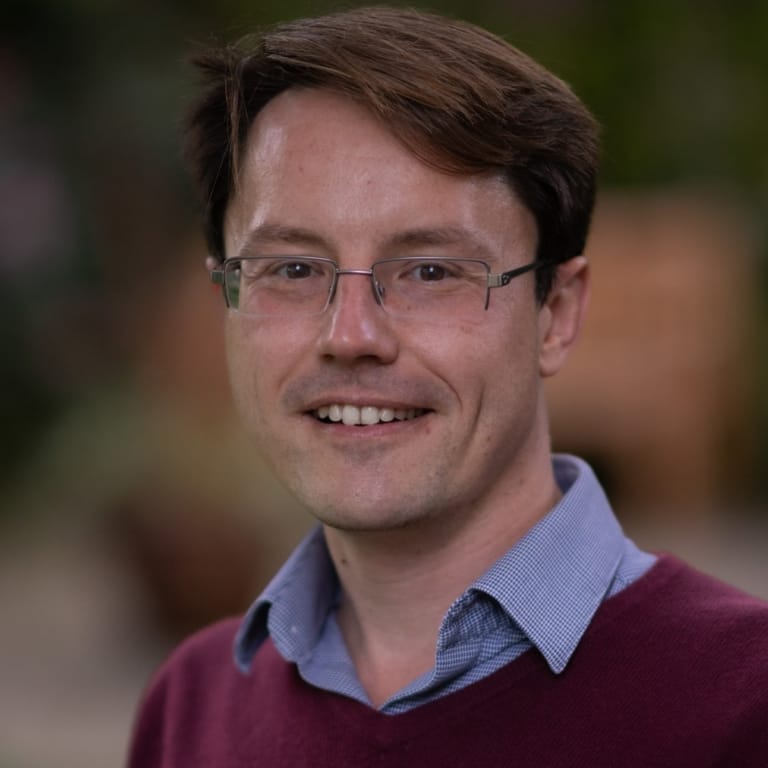At the end of November, the Lister’s Director, Sally Burtles, and Chair, Professor Sir Alex Markham, visited the Babraham Institute to attend talks by recent winners of the Lister Prize. Greatly delayed by the COVID-19 pandemic, this series of talks has been a fantastic opportunity for the Lister to catch up with these promising young researchers.

Hayley Sharpe presented an overview of her research into the targeting of receptor tyrosine phosphatase (PTP) signalling mechanisms in conditions such as cancer or spinal cord injury.
These cell surface receptors are enzymes that help cells sense and respond to their environment. By catalysing the removal of phosphate groups from other proteins, they trigger changes in the cell.
Hayley is using the Lister Prize funds to look at a family of PTPs that regulate cells’ attachment to each other. Her lab is using the funding to identify tools to dissect this signalling mechanism and improve their understanding of how it functions in health and disease. They have already identified a mutation of interest, which they are now studying in mouse models of disease.

You can find out more about Hayley’s research on the Babraham Institute’s website. You can also read our interview with her, dating from May 2021. Michelle Linterman, a Lister Prize winner from 2019, also gave a talk. She and her team are researching inflammation in the body. In particular, they explore how inflammation can remodel peripheral tissues to recruit immune cells.
The formation of tertiary lymphoid structures (TLSs) in non-lymphoid tissues occurs in many inflammatory conditions such as infection, autoimmune disease and cancer. TLSs vary in cellular composition from loose arrangements of T cells to highly organised aggregates which contain germinal centre (GC)-like structures that generate long-term immunity.
Michelle is investigating how remodelled peripheral tissues support a GC response in non-lymphoid tissues, by recruiting B cells to the sites of inflammation, primarily by studying how the influenza infection remodels the lung to support ectopic GCs at this site.
Michelle’s presentation follows the publication of her latest paper. The paper, titled “Impaired HA-specific T follicular helper cell and antibody responses to influenza vaccination are linked to inflammation in humans” was published earlier in November on the eLife platform.
In this research into ageing and the response to vaccinations, the Linterman Lab and their colleagues from other institutions describe their work to track the immune response in people of different ages following flu vaccination. The research found that T follicular helper cells are linked with good flu antibody responses in younger people. In people over 65, however, the formation of these cells upon vaccination is reduced compared to younger individuals. The work suggests that dampening inflammation at the time of vaccination may be a strategy to induce effective, optimal and long-lasting immunity in older people.

You can find out more about Michelle and her research on the Babraham Institute website.Tim Blower of Durham University also gave his delayed Lister Prize talk in early December. Like Michelle, he was awarded the Lister Prize in 2019. He researches toxin-antitoxin systems and bacterial bacteriophage-resistance mechanisms, including BacteRiophage EXclusion (BREX).
BREX is a form of bacteriophage (phage) resistance system that was first identified in 2015. Tim’s research activity aims to gain a greater understanding of how BREX functions – and the interactions between phages and their hosts – in the hope of putting it to use as a biomedical tool for developing a range of therapies.
Through research-led teaching, Tim’s undergraduate students have characterised and named phages that they have collected from water sources around Durham. The Blower Lab then characterise what causes each phage’s susceptibility or resistance to bacterial defence mechanisms.
By identifying the key proteins needed for phage resistance, Tim aims to generate a model of the BREX process and identify which factors determine the outcome of a phage-BREX interaction.
You can read our interview with Tim and find out more about his lab’s research on its website.



